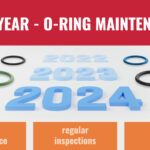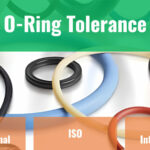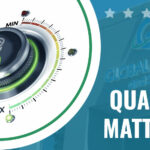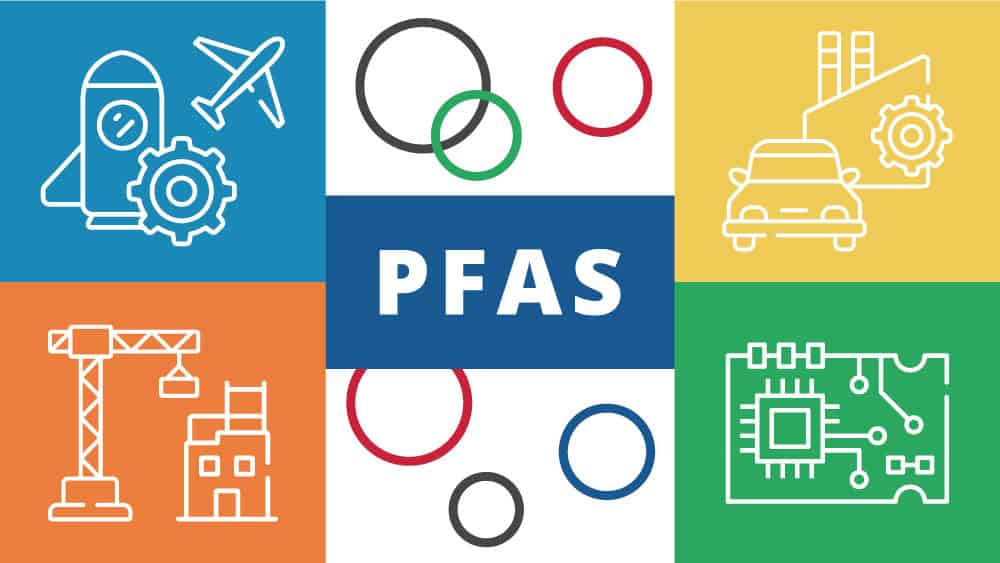
Summary
- PFAS chemicals, used in many sectors and potentially harmful to health and the environment, face increasing regulation, affecting manufacturers and users of elastomers.
- Regulatory differences between the US and EU pose challenges for manufacturers, requiring informed decisions on product strategy and compliance across different regions.
- Global O-Ring and Seal has undertaken rigorous auditing to ensure our elastomers are free from PFAS, complying with regulations from entities like the EPA and ECHA.
Overview
PFAS (per- and polyfluoroalkyl substances) are synthetic chemicals widely utilized in various industrial and consumer products across multiple sectors. However, concerns about their effects on human health and the environment have sparked debates and regulatory actions worldwide. This article explores the uses of PFAS chemicals, regulatory efforts in the United States and Europe, and their potential impact on elastomers. Exploring the implications of these regulations on elastomer materials provides valuable insights into the challenges manufacturers and users encounter as they strive to comply and adapt to the ever-changing landscape of PFAS regulations.
Diverse Applications of PFAS Chemicals
PFAS chemicals find applications in several industries:
- Consumer Products: Non-stick cookware, water-repellent clothing, and stain-resistant furniture.
- Food Packaging: Pizza boxes, microwave popcorn bags, and fast-food wrappers.
- Textiles: Carpets, upholstery, and outdoor fabrics.
- Firefighting Foam: Used to extinguish flammable liquid fires in various settings.
- Industrial Applications: Electronics manufacturing, metal plating, semiconductors, and elastomers.
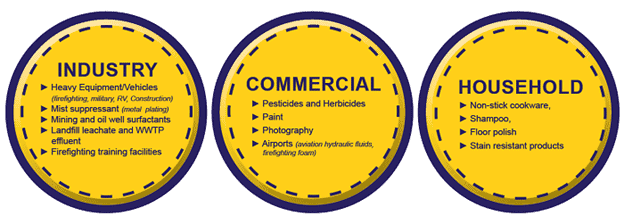
Regulatory Actions
With increasing concerns about the potential impact of PFAS chemicals on human health and the environment, governments worldwide have taken decisive action by implementing restrictions and regulations. Recognizing the urgency of addressing these challenges, regulatory bodies such as the United States Environmental Protection Agency (EPA) and the European Union (EU) have stepped up their efforts. In this section, we will explore the proactive measures taken by these entities and discuss what our company is doing to ensure compliance and contribute to a safer future. By shedding light on the regulatory landscape and sharing our commitment, we aim to provide insights into the collective efforts to protect public health and preserve our natural surroundings.
United States’ Environmental Protection Agency
The United States’ Environmental Protection Agency (EPA) has been actively addressing PFAS contamination through its PFAS Action Plan, which includes strategies such as setting maximum contaminant levels in drinking water, providing guidance to communities, and promoting research.
The EPA has identified several PFAS chemicals of concern, including PFOA, PFOS, PFNA, PFHxS, PFHpA, and PFBS. We take these concerns seriously and have taken proactive steps to ensure that our products do not contain these harmful substances. In line with our commitment to environmental safety, we have undertaken a comprehensive evaluation of our collection of o-ring and cord elastomers to guarantee their absence of per- and polyfluoroalkyl substances (PFAS). We are delighted to announce that the following elastomers in our portfolio are free from PFOA, PFOS, PFNA, PFHxS, PFHpA, and PFBS, as confirmed through our rigorous audit:
| Material | Description | Durometer | Color | Temperature Range (°F) |
| NBR | General purpose Nitrile (Buna) | 70 | Black | -31 to +248 |
| NBR | General purpose Nitrile (Buna) | 90 | Black | -4 to +248 |
| FKM | General purpose Genuine Viton® | 75 | Black | -15 to +450 |
| FKM | General purpose Genuine Viton® | 75 | Brown | -15 to +450 |
| FKM | General purpose Genuine Viton® | 90 | Black | -15 to +450 |
| Silicone | FDA-Grade Silicone | 70 | Red | -76 to +437 |
| EPDM | General purpose EPDM | 70 | Black | -67 to +257 |
European Union Efforts
The European Chemicals Agency (ECHA) plays a crucial role in implementing chemical regulations in the EU. In 2020, ECHA recommended adding four types of PFAS substances to the EU’s list of substances of very high concern (SVHC) under the REACH regulation. These substances are commonly found in consumer and industrial applications, and their inclusion triggers specific obligations for companies.
Stringency Differences between the US and EU
The European Union (EU) has taken the lead in proposing stringent regulations for PFAS chemicals compared to the United States. While the EU aims to restrict the use of all PFAS chemicals, the United States Environmental Protection Agency (EPA) has focused on regulating specific types. Additionally, the EU has established lower limits for PFAS in drinking water, food, and other consumer products. These differences in regulatory stringency can pose challenges for manufacturers operating in both regions, as compliance with EU regulations may require more comprehensive measures. However, compliance considerations may vary depending on the industry and product, and some manufacturers may find it relatively easier to comply with US regulations due to the narrower scope and potentially more flexible limits. By staying informed about the varying approaches and stringency levels between the United States and the EU, companies can make informed decisions regarding their products, supply chains, and market strategies.
Potential Impact on Elastomers
Elastomers that contain PFAS chemicals may be subject to restrictions based on regional regulations. Examples of such elastomers include:
- FKM (fluoroelastomer): These elastomers may contain small amounts of PFAS chemicals used as processing aids during production.
- FFKM (perfluoroelastomer): Known for their high resistance to heat, chemicals, and harsh conditions, FFKM elastomers may also contain PFAS chemicals.
- HNBR (hydrogenated nitrile butadiene rubber): Although HNBR elastomers typically do not contain PFAS chemicals, they may still be affected by supply chain and regulatory issues related to these substances.
Conclusion
PFAS chemicals are facing increased scrutiny due to concerns about their impact on human health and the environment. As regulatory efforts intensify, manufacturers and users of elastomers must stay informed about evolving regulations and develop strategies to address any potential impacts. Adapting to the changing landscape will be crucial for maintaining compliance and meeting market demands in different regions.
At Global O-Ring and Seal, we are committed to providing high-quality elastomer products that not only meet regulatory requirements but also adhere to environmental safety standards. In line with this commitment, we are actively gathering PFAS data on our remaining product lines and continuously monitoring government regulations. This proactive approach enables us to stay ahead of regulatory changes and ensure that our products align with the most up-to-date compliance guidelines.
Our dedication to keeping an open line of communication with our customers remains unwavering. As new information and regulatory updates emerge, we will promptly share them with you. We understand the importance of collaboration and transparency in navigating the complexities of PFAS regulations, and we strive to work closely with our customers to address any concerns and find appropriate solutions.

 English
English  Español
Español  Français
Français  Português
Português  Deutsch
Deutsch  Italiano
Italiano  Русский
Русский  中文
中文  日本語
日本語  العربية
العربية  हिन्दी
हिन्दी 